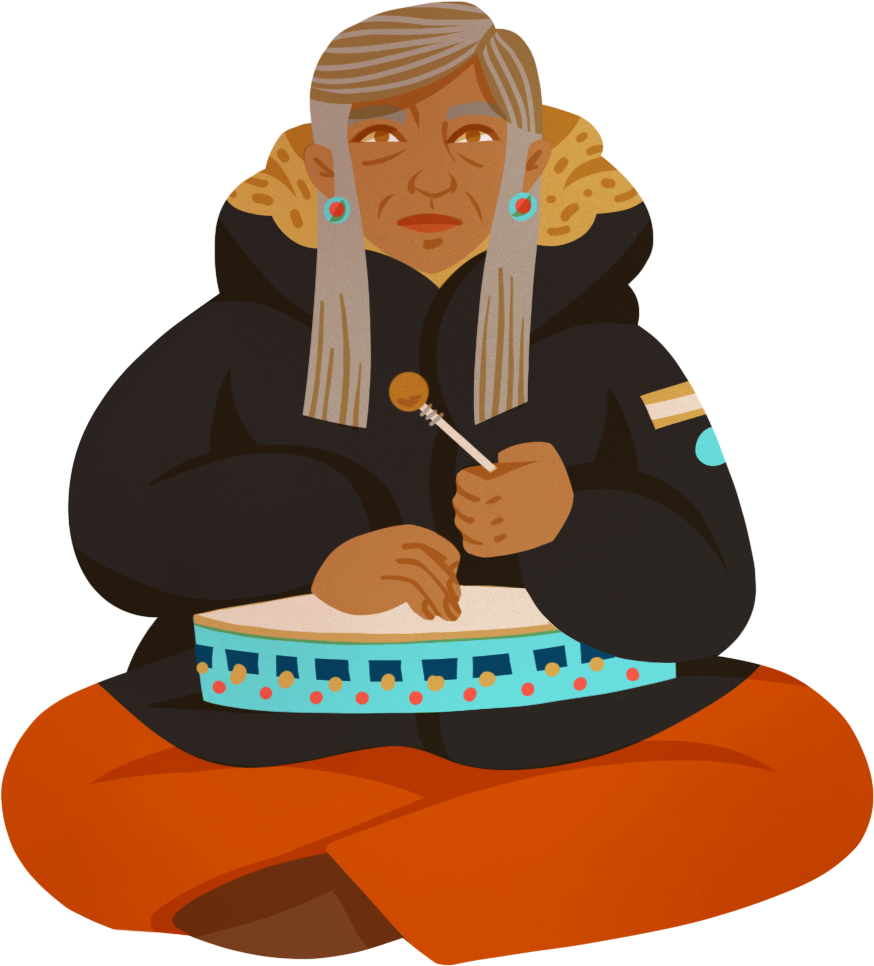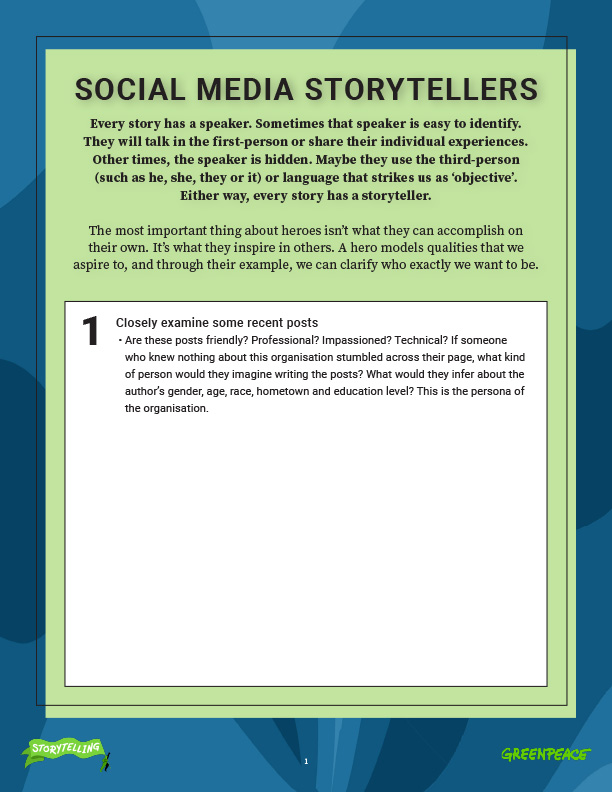EXERCISE: SOCIAL MEDIA STORYTELLERS

Every story has a speaker. Sometimes that speaker is easy to identify. They will talk in the first-person or share their individual experiences. Other times, the speaker is hidden. Maybe they use the third-person (such as he, she, they or it) or language that strikes us as ‘objective’. Either way, every story has a storyteller.
Social media is one of the most important ways that we communicate our stories to others. If you are working with an organisation that has a social media presence, pull up its pages on your phone or computer. If that’s not the case for you, then pull up the pages of a group doing similar work.
1
Closely examine some recent posts.
- Are these posts friendly? Professional? Impassioned? Technical? If someone who knew nothing about this organisation stumbled across their page, what kind of person would they imagine writing the posts? What would they infer about the author’s gender, age, race, hometown and education level? This is the persona of the organisation.
2
Consider why your group (or the group whose page you’re examining) adopts this persona.
- Who does it connect with? How does it connect with them?
- Now consider this persona’s limitations. Who might it alienate? Who might feel that this voice is not speaking to them?
3
Build your ideal messenger.
- Can you imagine someone who could speak authoritatively and convincingly to the full range of people you’re trying to reach? Think in terms of physiology (age, sex, health, etc.). Think in terms of sociology (race, class, nationality, political affiliation, etc.). Think in terms of psychology (values, ambitions, attitudes, aptitudes, etc.).
4
Compare the two storytellers: the one currently projected via social media and the ideal messenger you’ve just built.
- How far apart are they? What are the key differences? What concrete steps could be taken to bridge the gap?
DOWNLOAD THIS EXERCISE

